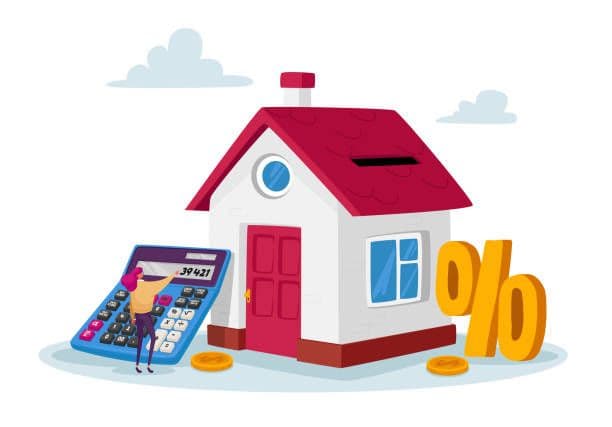8 Types of Home Loans Explained (Conventional, FHA, VA, etc.)
Summary
Confused about home loans? This guide breaks down 8 types, including conventional, government-backed, and reverse mortgages, outlining pros, cons, and who they suit. Find the best housing finance option for your lifestyle and financial goals in 2025.

Buying a Home Can Be Emotional—and Confusing
Buying a home is one of life’s most exciting moments. It’s a mix of joy, hope, and sometimes, a little stress. The first time you start looking at houses, you might feel overwhelmed by the numbers, paperwork, and options. That’s where understanding home loan types becomes a lifesaver.
Choosing the right mortgage option in India isn’t just about interest rates—it’s about matching your lifestyle, future plans, and financial comfort. This guide will help you navigate housing finance India, loan schemes India, and other real estate finance options so that buying your dream home in 2025 feels achievable, not intimidating.
1. Conventional Home Loans: The Classic Choice
Let’s start with the most common: conventional loans. These are offered by banks or housing finance companies without any government backing. Think of them as the standard path most buyers take.
Why they work: Conventional loans are flexible and widely available. If you have a stable salary, a good credit history, and a little patience, this could be your ideal choice.
Pros:
Wide selection of lenders Can be used for new or resale homes Loan amounts based on your eligibility
Cons:
Interest rates can be higher than government-backed options Strict eligibility criteria
Imagine Rahul, a young professional in Pune, who used a conventional loan to buy his first apartment. The process was straightforward because he had stable income and clean credit records.
2. Government-Backed Home Loans
Government-backed loans, such as PMAY in India, are designed to help first-time homebuyers or people from lower-income groups. These are similar in concept to FHA loans in the US.
Pros:
Lower interest rates or subsidies Easier eligibility for first-time buyers Sometimes longer repayment periods
Cons:
Loan amounts may be limited Some restrictions on property type or location

Take Priya, a first-time buyer in Bengaluru. She got a government-backed loan and could afford a small but beautiful apartment with an interest subsidy. For many people, schemes like this make housing finance India accessible and realistic.
3. Fixed-Rate Home Loans
Fixed-rate loans keep the same interest rate for the entire tenure. This type is perfect if you prefer stability in your EMIs.
Pros:
Predictable monthly payments Easier to budget Protection from rate hikes
Cons:
Starting rate might be slightly higher than floating loans Less flexible if market rates fall
Fixed-rate loans are ideal for people who don’t want surprises in their finances. Imagine Sunil, who values stability, happily paying the same EMI every month without worrying about market fluctuations.
4. Floating-Rate Home Loans
Floating-rate loans fluctuate with market rates or bank benchmarks. They might start lower than fixed-rate loans, but they can increase if rates rise.
Pros:
Lower initial rates Potential to save if rates drop Flexible repayment options
Cons:
EMIs can increase unpredictably Less certainty in budgeting
For young professionals with increasing incomes, floating-rate loans can be advantageous. They offer flexibility and potential savings, but require careful planning.
5. Home Loan Balance Transfer
A balance transfer isn’t exactly a loan type, but it’s important. It allows you to move your existing loan to another lender, usually for a better interest rate or more favorable terms.
Pros:
Save on interest costs Flexible tenure options Can access better loan features
Cons:
Processing fees Requires evaluation to ensure net savings
Imagine Rina, who took a loan 5 years ago at a high rate. By transferring her balance, she reduced her EMIs significantly and saved thousands over time.
6. Home Construction Loans
If you plan to build rather than buy, a construction loan is perfect. Banks release funds in stages, depending on construction progress.
Pros:
Funds are disbursed as needed Covers construction and sometimes land cost Ideal for new builds
Cons:
Higher monitoring and paperwork Slightly higher interest rates
For example, Ankit and Meera bought a plot and used a construction loan to build their dream home. Paying interest only on the amount disbursed eased their cash flow.
7. Home Improvement Loans
Sometimes, your home needs expansion or renovation. A home improvement loan finances repairs, upgrades, or extensions.
Pros:

Improves property value Lower interest than personal loans Flexible loan amounts
Cons:
Must be used for home improvement Requires proof of ownership
Think of Kavita, who wanted to add an extra bedroom for her growing family. A home improvement loan made it possible without touching her savings.
8. Reverse Mortgage for Seniors
Reverse mortgages help senior citizens unlock equity in their homes. Instead of monthly repayment, banks pay homeowners a regular income.
Pros:
Provides steady income for retirees No monthly repayment Retain home ownership
Cons:
Reduces inheritance value Complex eligibility rules
For seniors like Mr. Sharma, this option allows financial independence without selling the home they’ve lived in for decades.
How to Choose the Right Home Loan
Choosing the right home loan type depends on your lifestyle, goals, and finances. Here’s a simple checklist:
Want fixed EMIs? → Fixed-rate loan Comfortable with market fluctuations? → Floating-rate loan First-time buyer needing help? → Government-backed scheme Building or renovating? → Construction or improvement loan Senior needing income → Reverse mortgage
By asking these questions, you can confidently decide which mortgage option suits you best in 2025.
Conclusion
Navigating home loan types can feel overwhelming, but understanding your options makes the process empowering rather than stressful. Whether you choose conventional loans, government-backed schemes, fixed or floating rates, construction loans, or even reverse mortgages, every choice has its purpose.
The key is to align your financial situation, future plans, and comfort level with the best home loan options for buyers in India. By doing so, buying a home becomes not just a financial step, but a joyful, confident journey toward your dream living space.
Summary (100 words)
Buying a home requires understanding the different types of home loans in India. This guide explains conventional, government-backed, fixed, floating, construction, improvement, and reverse mortgages, highlighting their benefits and drawbacks. Knowing which type of home loan is best for you in 2025 helps you plan finances wisely, reduce stress, and choose a mortgage aligned with your lifestyle. From first-time buyers using government schemes to seniors seeking reverse mortgages, selecting the right housing finance India option ensures stability, flexibility, and long-term financial security. With this human-focused guide, navigating real estate finance becomes a confident and emotionally satisfying journey.
